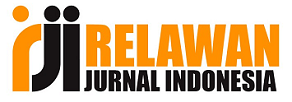Developing the Image Card Methods for Learning Vocabulary in The Islamic Promary School
DOI:
https://doi.org/10.30762/asalibuna.v5i02.584Keywords:
Picture Card Media, Mufrodat LearningAbstract
This study aims to find out how the development of picture card media products for mufrodat learning at MI Al-Istiqomah Banjit Way Kanan. Researchers are interested in developing this media because mufrodat learning in MI is still using conventional media, so there needs to be media that can help in learning mufrodat at MI Al-Istiqomah Banjit Way Kanan. This study uses the type of research and development (Research and Development) or R&D, namely the research method used to produce a particular product and test the feasibility of the product. Using the ADDIE model developed by Dick and Carry, it is arranged programmatically with systematic sequences of activities in an effort to solve learning problems related to learning resources, needs and learning characteristics. This model consists of five steps, namely: Analysis (analyze), Design (design), Development (development), Implementation (implementation) and Evaluation (evaluation). This study produced a product in the form of picture cards for mufrodat learning, totaling 28 cards covering mufrodat learning during the even semester with the theme of addresses, family members, and family at home. So that it is expected that students will more easily understand the material presented by the teacher and can follow the learning process in a fun and not boring way. Based on the results of data analysis, after going through the process of validation and product testing, namely material validation by obtaining a percentage value of material feasibility of 81% and media validation of 78% and responses from student questionnaires of 80% which are in the very feasible category. It was concluded that the media was feasible and could be used as a supporting medium for learning Arabic, especially mufrodat.
Downloads
Downloads
Published
How to Cite
Issue
Section
License
Copyright (c) 2021 Asalibuna

This work is licensed under a Creative Commons Attribution-NoDerivatives 4.0 International License.








